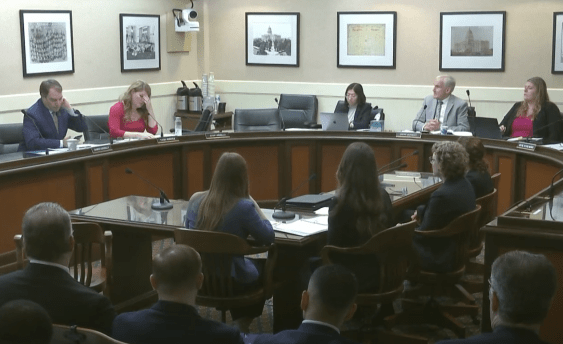The auto
safety bill working its way through Congress includes a provision
with major implications for traffic enforcement and safer streets: a
rule to equip new cars with "black boxes" capable of recording up to 60
seconds worth of pre-crash data.
 The NYPD investigation into the 2008
The NYPD investigation into the 2008crash that killed cyclist Rasha Shamoon relied heavily on interviews
with the driver and his passengers.
What might black
boxes -- scaled-down versions of flight recorders used in commercial
airliners since the 1950s -- bring to street safety? Data and
accountability.
Data that can reveal driver choices such as speed and braking in
the crucial seconds preceding a crash; and driver accountability that
police and prosecutors historically have been loath to enforce, in part
because crash reconstruction has lacked sufficiently firm evidence.
U.S. automakers began installing "event recorders" in new cars in
the 1990s to defend against lawsuits over air bag deployment, and most
cars built since 2004 have some sort of data recording device. But the
current NHTSA standard for black boxes is optional, and recommends that
they record only five seconds of data preceding crashes. Which makes it
noteworthy that the Alliance of Auto Manufacturers told
Congress last month that it won't oppose making the standard
mandatory and extending the recording period to a full minute. That
interval should be sufficient to give crash investigators information to
assign culpability, and, where the facts warrant, for prosecutors to
indict and juries to convict.
Here’s how the New
York Times reported an early use of black box data to convict a
reckless driver in Rochester, in 2004:
After Danny G. Hopkins’s Cadillac CTS rear-ended Lindsay Kyle’s DodgeNeon at a traffic light in Rochester a year ago, witnesses said Mr.Hopkins had been zooming down the road, and crash investigators whoexamined the condition and location of the wreckage estimated that Mr.Hopkins was traveling 65 to 70 miles an hour at the point of impact. But in a trial that ended on Oct. 7, a witness emerged with more to say:that four seconds before the crash, it had been traveling 106 m.p.h. The witness in the case was an event data recorder, an automotiveequivalent of the black boxes used to reconstruct plane crashes. A juryconvicted Mr. Hopkins of second-degree manslaughter, a crime whoseelements include recklessness and which carries a penalty of up to 15years in jail.
The Monroe County assistant district attorney told the Times,
“Clearly the black box technology played a large part in the jury’s
finding of guilty.” Six years later, why aren't DA's routinely mining
black boxes for data?
One reason is the limited data from black boxes noted earlier.
Another is the low staffing for, and status of, traffic justice in
police departments and prosecutorial agencies. But the biggest obstacle
has been the huge weight accorded privacy concerns, a penchant
inadvertently played up by the 2004 Times story headline, “Does Your Car
Have a Spy in the Engine?” As U.K. road safety campaigner John
Whitelegg once noted, the public’s right for protection against lethal
driving has been trumped by motorists' "right" to protection from the
risk of being found guilty of breaking the law.
Much of this could change if, as
appears likely, Congress writes a black-box standard into the auto
safety bill. As I wrote six years ago [PDF], with
the notable exception of DWI, which can be conclusively demonstrated in
a roadside breathalyzer test or by measuring the driver’s blood alcohol
content, irrefutable evidence implicating negligent drivers has been
expensive or impossible for the state to obtain. Indeed, the difficulty
of conclusively assigning responsibility for vehicle crashes helped give
rise to no-fault insurance in the 1960s, paving the way for the
no-fault ethos that helps make our streets and highways killing zones.
Putting reckless driving on a par with drunk driving, both legally
and culturally, is a key building block for safe and livable streets in
New York and across America. A strong federal black-box standard could
be a major step.




